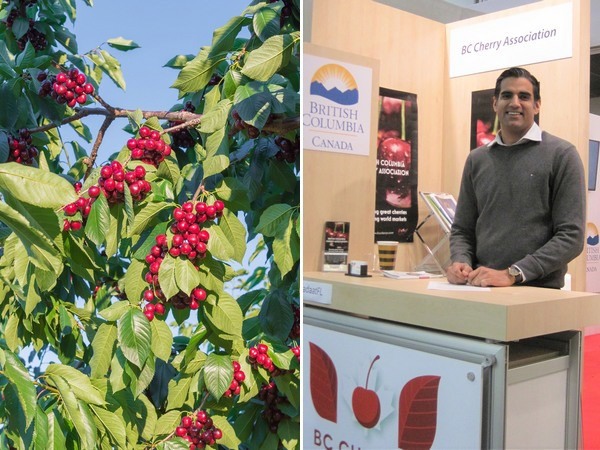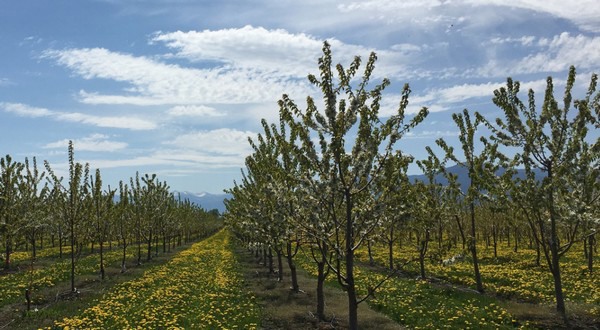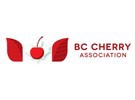As the British Columbia (B.C.) cherry season approaches this summer, the industry is seeing a few welcome developments. This starts with exports. “We have full access to South Korea now with a systems-based approach, which means no fumigation,” says B.C. Cherry Association president Sukhpaul Bal.
The industry underwent a test program last season with a limited number of orchards and packing houses, and in December South Korea confirmed its approval for a full program in 2023. “It’s a market we don’t really have to introduce cherries to. They’re well familiar with them and they do source a lot from the U.S. and other parts of the world. Arrivals by air and ocean from B.C. will help extend the availability of fresh cherries in South Korea through August and into late September,” he says.
 Sukhpaul Bal says the research the association has done suggests that Canadian consumers prefer to buy Canadian cherries if they are given the choice, and investing in the domestic market is an obvious strategy.
Sukhpaul Bal says the research the association has done suggests that Canadian consumers prefer to buy Canadian cherries if they are given the choice, and investing in the domestic market is an obvious strategy.
Also in exports, more B.C. farms are registered this season to ship cherries to China. Registering additional farms has been ongoing and there is a significant quantity of acreage that has been planted in recent years that is now coming into full production.
Closer to home, the crop will be promoted via a new marketing push this year. Canadian Cherry Month will run from July 15-August 15, and it’s a coast-to-coast campaign that will encompass traditional media outlets and social media, together with in-store promotions and consumer prizes. One of the key objectives is to drive consumer demand for Canadian cherries in Ontario and Quebec.
“The eastern provinces have been served by Washington State for many years primarily due to the sheer volume grown there and the fact that our industry was on a smaller scale,” says Bal. “However our acreage has increased dramatically over the past decade. The research we’ve done suggests that Canadian consumers prefer to buy Canadian cherries if they are given the choice and investing in the domestic market is an obvious strategy. The risk is lower as it’s closer to home, as are shipping costs. Not all cherry growers have a business model that is focused on exports to overseas markets. Some are quite happy to supply the domestic market and we need that diversity in our industry.”
Help with labor
The industry is also trying a new solution to the ongoing labor shortage and that’s taking a page from the gig work economy. www.BCfruitworks.com is a new initiative by the tree fruit industry and the B.C. government to reengage the backpacking labor that has historically come from provinces such as Ontario and Quebec to help with cherry, grape and apple harvest in the province. Via this site, potential farm workers can sign up with their mobile phone numbers while growers can post updates to match up with short-term workers when they need help. The site sends texts to the workers detailing those short-term job opportunities and connects both parties.
“There was obviously a sharp decline in the ‘backpacker workforce’ during COVID, though it was already falling off prior to that,” Bal says. “We don’t see many young people from our own area looking for this type of work, so we are mainly advertising this program in universities and on social media in Quebec and Ontario." He says young people from those provinces have traditionally made their way out west in the summer as a way to see the rest of Canada and earn money and it hope this new program will encourage them to continue and make it easier to connect growers with the workers they need.
 The majority of B.C. cherry orchards have finished blossom now.
The majority of B.C. cherry orchards have finished blossom now.
Looking ahead at the season, the majority of B.C. cherry orchards have finished blossom now. “We thought it was going to be a later season initially but it’s warmed up more recently,” says Bal. “The start of blossom was about two weeks behind normal timing but we’re now in a heat wave here with high 20s/low 30s Celsius. That’s pretty warm for this time of year and will almost certainly advance the season. This means the harvest probably won’t be as late as we previously thought."
But this heat wave isn’t affecting only British Columbia. Washington State in the U.S. is also experiencing this unseasonably warm weather, and Bal thinks cherries are going to be coming on more quickly across the whole of the Pacific Northwest. "We still expect the B.C. cherry harvest to be later than Washington, as it traditionally is, but both regions are going to be closer to normal timing than we would have predicted three weeks ago when we were still waiting to see the first flowers," he says. "Early signs are that we are looking at an average to good-size crop, but we still need to wait a few weeks longer to see how the cherries develop in the critical post-pollination period.”
 For more information:
For more information:
Sukhpaul Bal
B.C. Cherry Association
president@bccherry.com
www.bccherry.com
